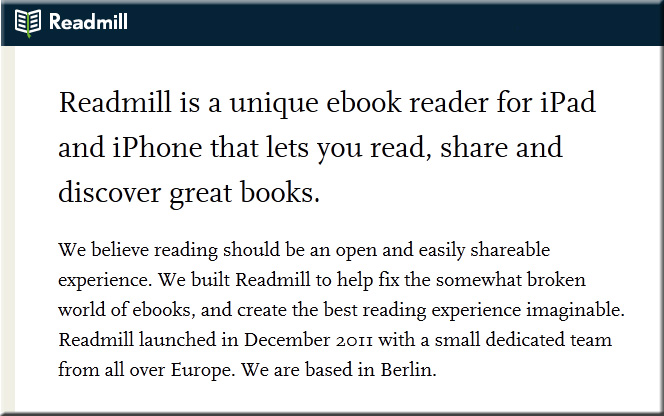E-books could be the future of social media — from fastcolabs.com by Michael Grothaus
Excerpt (emphasis DSC):
Both Apple and Amazon were designing e-book readers by copying the 2,500-year-old idea of books as self-contained collections of words, completely missing how readers share and discuss content online today. While most e-readers allow you to share passages or links to the book you are reading, and sites like Goodreads let you share what you’ve read, their implementations treat the book and the discussions around them as separate collections. Worse, these apps force users to venture into the distracting world of the open Internet when they want to share, making it hard to stay focused on reading.
This didn’t sit well with Berggren, so he came up with an ingenious solution: Make each and every book its own self-contained social network.
From DSC:
When people urge us to do things differently due to the technologies at our disposal, this is a great example of that. It rethinks what can be done now vs. how it has been done in the past. I like the increased opportunities this type of big-thinking, innovative solution offers for increased participation, collaboration, and discussion.
Questions that come to my mind:
- How might this affect what’s possible with digital storytelling? With transmedia?
- Could each MOOC/course/stream of content be its own social network?
- “The app itself is free, so the company makes money by selling anonymized data it collects about its users’ consumption habits to publishers.” Will we see more of this type of business model?
Also see:
.
Also see:
Addendum on 9/10/13:
Content as a Service (CaaS) — from knowledgestarblog.wordpress.com by David Grebow
Excerpt:
The etextbook in 2018 will be dramatically different than the etextbook of today. It will be coupled to an app that will provide you with Content as a Service (CaaS). CaaS will include many of the following features (and more that have yet to be imagined):
Multimedia
Simulations
Educational Games
Animations
Pre- and post-tests
Formative and Summative Quizzes
Adaptive testing
Networked Social Learning
Study groups
Analytic Datasets
Virtual and Flipped classes
Communities of Learning and Practice
Virtual classes.










I wrote a related piece on how content will be digitally transformed from a product to a service in future textbooks. Its a great leap forward and the idea that each book is a social network is already a reality on some campuses. http://wp.me/pP4sp-oo
Thanks David – I put an addendum to the posting that you commented on, and wanted to highlight your thoughts on this as well:
http://danielschristian.com/learning-ecosystems/2013/09/10/content-as-a-service-caas-grebow/